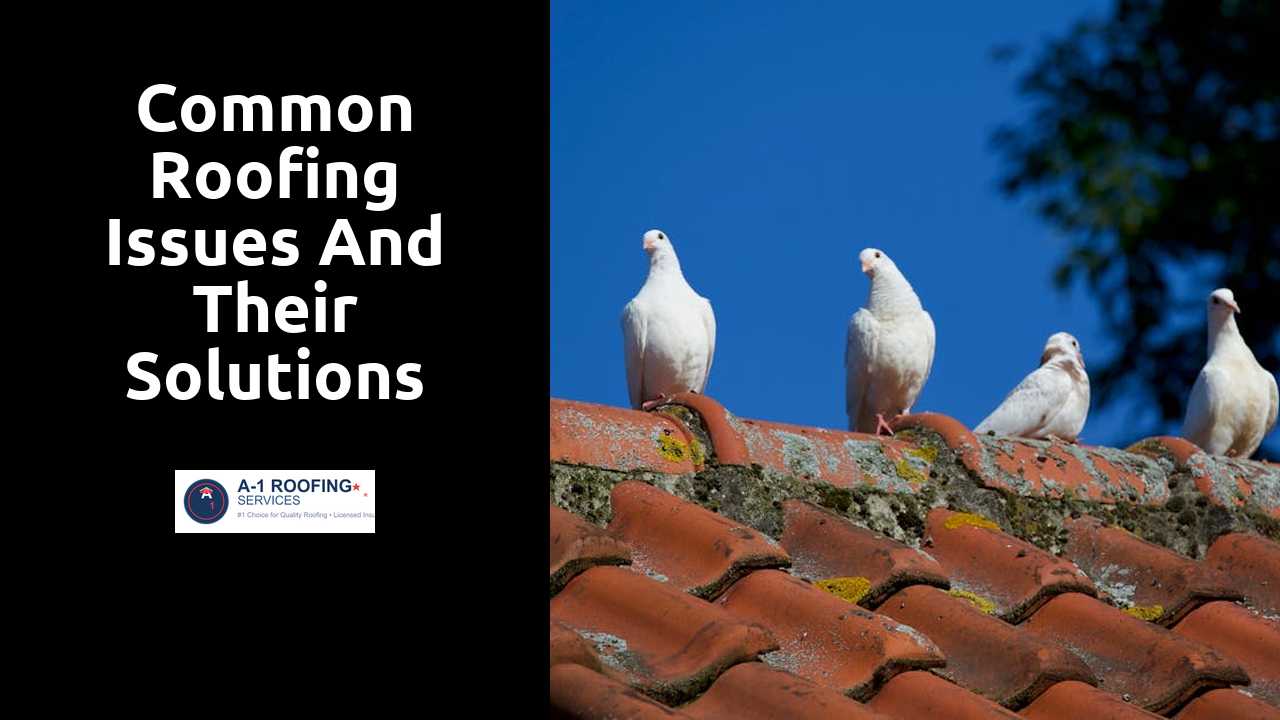
Common Roofing Issues and Their Solutions
Table Of Contents
Granule Loss on Shingles
Granule loss on shingles can significantly compromise the integrity of a roof. This problem is often the result of aging, harsh weather conditions, or heavy foot traffic during inspections or repairs. As these granules provide essential protection against UV rays and physical damage, their absence may lead to a faster deterioration of the underlying materials, resulting in leaks or other structural issues.
Regularly inspecting shingles for granule loss is crucial for maintaining roof health. Homeowners should keep an eye out for granules in gutters, as well as bald patches on shingles. If significant granule loss is detected, it may be necessary to consider repairs or even a complete roof replacement to ensure long-term protection and avoid costly damage.
Find out further details by clicking here.
Understanding the Impact of Granule Loss
Granule loss on shingles can significantly diminish the lifespan and effectiveness of a roof. These granules serve multiple purposes, including UV protection and surface traction. When they wear away, the underlying materials become exposed and vulnerable to damage from the elements. This exposure increases the likelihood of leaks and can lead to further deterioration of the roofing structure. Homeowners often face increased energy costs due to the compromised insulation that results from such damage.
In addition to compromising a roof's integrity, granule loss can affect the overall aesthetics of the home. Shingles with missing granules appear faded and uneven, detracting from the curb appeal. Furthermore, the diminished protective layer allows the natural forces of weather, like wind and rain, to exacerbate the situation. Consequently, addressing granule loss promptly is crucial not only for maintaining the roof but also for preserving the property's value.
Cracked or Slit Roof Membrane
A cracked or slit roof membrane can lead to significant problems if not addressed promptly. This issue typically arises from age, exposure to the elements, or improper installation. When the membrane is compromised, it allows water to penetrate the underlying materials, which can cause leaks and damage to the structure. Identifying signs of wear, such as visible cracks or blisters, is crucial for homeowners to maintain the integrity of their roofing system.
Repairing a cracked or slit membrane often involves a thorough inspection and appropriate patching techniques. Homeowners may consider using specialized roofing sealants designed for their specific membrane type. In some cases, replacing entire sections may be necessary, especially if the damage is extensive. Regular maintenance and inspections can help prevent these issues from escalating, ensuring longevity and effectiveness of the roofing system.
Repairing and Maintaining Roof Membranes
Addressing cracks or slits in roof membranes requires timely intervention to prevent further damage. It is essential to assess the area surrounding the issue and clean off any debris or dirt. After properly preparing the surface, the use of a high-quality roofing sealant or membrane patch can effectively close the gaps. Be sure to apply the patch according to the manufacturer's guidelines. This ensures a durable seal that can withstand various weather conditions.
Regular maintenance plays a critical role in prolonging the life of roof membranes. Periodic inspections should be conducted to identify potential issues before they escalate. Look for signs of wear, such as blisters or pooling water, which may indicate a compromised membrane. Keeping gutters clear and ensuring proper drainage also helps maintain the integrity of the roofing system. Implementing these proactive measures will contribute significantly to the roof’s longevity and performance.
Ice Dams and Snow Accumulation
Winter weather can lead to significant challenges for homeowners, particularly when it comes to roofing. Ice dams form at the eaves of the roof when snow melts and refreezes. As warm air escapes from the house and warms the roof, snow begins to melt. The melted water flows down the roof but can refreeze when it reaches the colder eaves, resulting in a build-up of ice. This ice accumulation can prevent further melting and create a backup of water under shingles, potentially leading to leaks and damage within the home.
To address the risk of ice dams, homeowners can implement several preventative measures. Ensuring that attics are well insulated and ventilated reduces heat loss, helping to maintain a consistent roof temperature. Additionally, clearing snow from the roof after significant snowfall can prevent excessive ice accumulation. Installing heated cables along the roof's edge may also help manage melting snow and ice by creating channels for safe drainage, ultimately safeguarding the roof's structural integrity.
Preventative Measures for Winter Roofing
Homeowners can take several steps to prepare their roofs for the winter months. Regular maintenance is essential. Inspecting the roof for loose or damaged shingles helps prevent further issues. Clearing gutters of leaves and debris ensures proper water drainage as snow and ice melt. Additionally, ensuring that ventilation systems are functioning can help prevent moisture buildup in the attic, which may lead to ice dam formation.
Consider the installation of heating cables along the roof's edge. These cables can help keep eaves and gutters from freezing over. Applying roof ice and water shield along vulnerable areas further enhances protection. Regular inspections after heavy snowfalls or storms are advisable to catch any potential issues early. Investing time in these preventive measures can lead to significant savings and extend the life of the roofing system.
Related Links
How to Identify Roof Damage EarlyEssential Guide to Home Roof Repairs